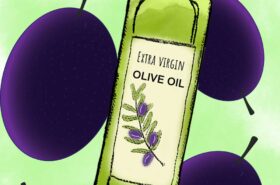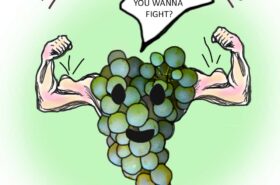Hello my noble wine geeks, today we are talking about little things, hidden things, weird things, and it’s not your first door neighbor! You sure knew we are talking about noble rot (yea, sure)! What is noble rot and how does it affect wine, is it harmful, is it good, bad or ugly (yeehaw), and much much more. Let’s go!
What is noble rot?
Noble rot is a technical term winemakers refer to when grapes are beneficially infected with a fungus called Botrytis cinerea. It is important to know that botrytis (for the winemaker) is both, a blessing and a curse. Why is that? You’ll learn the answer soon, but for now, picture it as both, the hero and the villain!
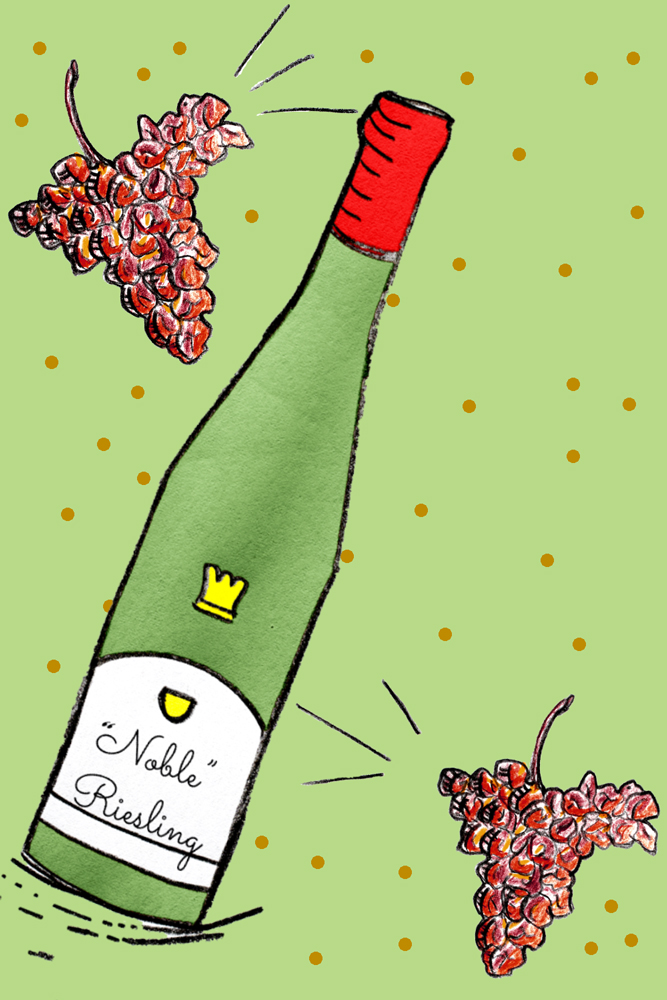
What is Botrytis cinerea?
Botrytis cinerea is a fungus that affects many plant species (like strawberries, rhubarb and lettuce for instance), but it’s most known for affecting wine grapes. But how does this little master of destruction do it?
How does Botrytis cinerea affect wine grapes?
The fungus is mostly present in the vineyard, either directly on dead grape tissue or other organic debris, or indirectly on a bunch of alternate plant hosts. He just waits for the right moment to conquer the vineyard, the real-life dr. Evil! He does so with spores that spread the disease (shhhhh Mr. Bigglesworth, we will conquer the wine world soon …)
He penetrates (yes, he does, it’s science!) into the grapes through small cracks, ruptures and openings on the berries, mostly when berries begin their ripening phase. In the grape berry botrytis finds ideal growing conditions, enough sugar and organic matter to grow. The only thing he needs now, for his evil plan to succeed, is humidity (ooooooh, yes, humidity). Just like every other fungus, he needs humid conditions to flourish.


Are there any differences between grape varieties?
Yes, there are! Grape varieties that have thin skinned grape berries (Pinot Noir, Pinot Blanc and Furmint/also called Pušipel or Šipon, etc.), are very susceptible to infections by the Botrytis cinerea fungus. The fungus penetrates the thin skin easily, especially at the end of their ripening period. Another factor is grape cluster pressure (ok, we know, the term sounds scary, but it isn’t!).
The grape varieties that are tightly packed with berries (like Pinot Blanc, Riesling and Pinot Gris for example) rupture more easily because of the pressure the berries apply to their neighboring “berry fellas” while ripening. Therefore, the looser the better! Grape varieties (or clones, but we won’t go into that, yet!) that have loose grape clusters are more resistant to botrytis infections.
Is botrytis harmful to humans?
In winely terms, no it isn’t! Wine made from grapes affected by botrytis is very similar to “normal” wine and isn’t any different. On the other hand, for farmers (or winegrowers) there is a very little risk of an allergic reaction to fresh mold which is called “farmers lung”. It’s not very common with botrytis mainly because it’s located outside in the vineyard with plenty of air to breathe. So let’s say it like that, you are more likely to become the next catwoman, then getting any harm from botrytis. Cheers to that (or meow?)!

Now that we know these facts, what is noble rot really?
We learned that Botrytis cinerea infects wine berries through little cracks and ruptures, and flourishes in the berry with the right growing conditions. Because of its presence, the grape berry changes also its chemical composition! How is that?
Well, botrytis acts as your middle school chemistry teacher! He produces new grape flavors (and chemicals) that, in the end, results in a whole different wine! On top of that, he takes out the water from the berry, concentrates its sugar content and the berry itself becomes raisin like!
If botrytis thrives (in humid conditions, without warm and sunny periods) it affects healthy berries in vast amounts and produces the not-very-popular “grey rot” or “bunch rot”. “Grey rot” is produced by the same fungus as noble rot, but because of its fast development in humid conditions, mostly in the earlier grape ripening phase, it results in loss of grape varietal aromas! “Grey rot” is the ugly bad brother of “noble rot” (sorry lil bro!).
On the other side, “noble rot” is produced from the same fungus, but within changing humid conditions (often brought by late autumn fogs) followed by warm/sunny periods. This means that not all wine growing regions in the world can have these specific weather patterns that result in “noble rot”. It’s also important to know that, with the changing climate and growing conditions, the classic “noble rot” regions change! Who knows what the future of “noble rot” will hold?
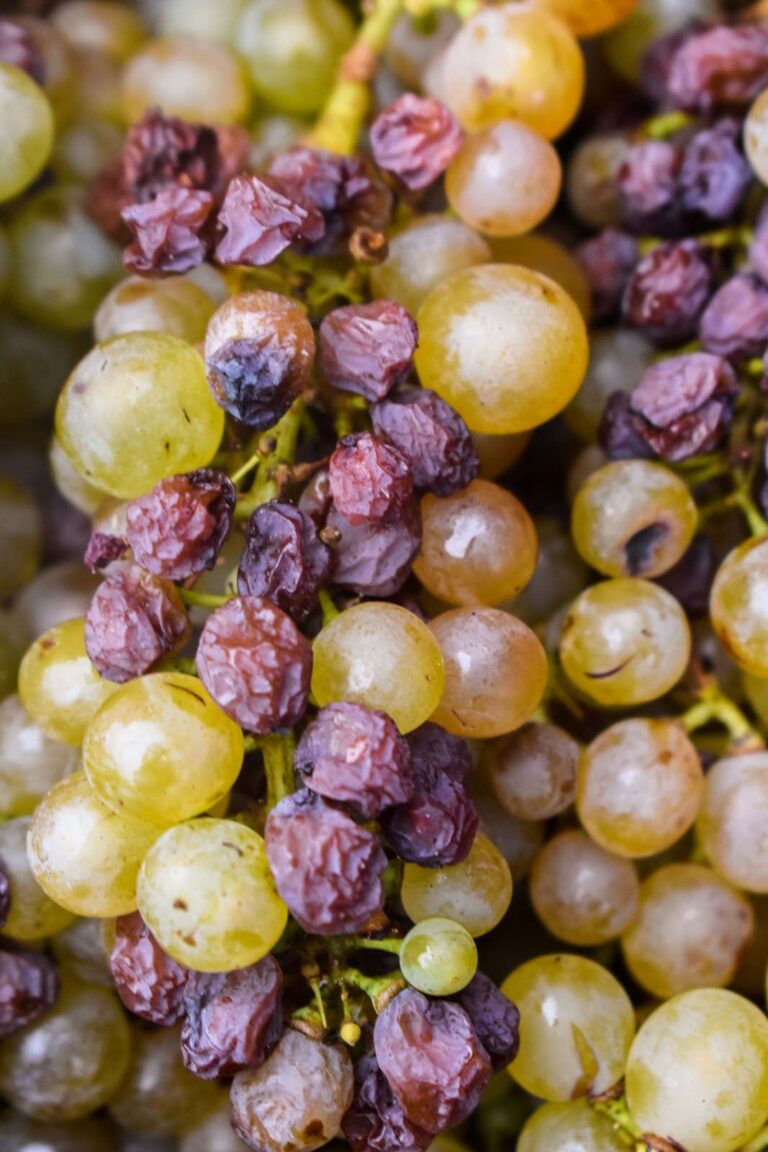
What wine is made from moldy grapes (“noble rot”) and where?
Well known wines made from “noble rot” are Sancerre (made from Semillon grapes in France), Tokaji (made from Furmint, Harslevelu and Yellow Muscat grapes in Hungary), in Germany (a lot of regions, but known for “noble rot” Riesling), Austria (Riesling), Canada (Vidal Blanc grape), Croatia (Pušipel and Graševina grapes), and with the changing weather patterns, there’s more regions and countries to follow!
What does wine made from “noble rot” taste like?
“Noble rot” changes the aroma profile of a wine drastically! Fruity and varietal specific aroma changes into complex “noble rot” aroma, which is characterized by tropical, exotic and fruity aromas like ginger, spice, mango, candied orange, candied lemon, chamomile etc. On the other side you can also find very complex aromas like licorice, anis, cloves and leather for example.
The taste of “noble rot” affected wine is very dense, almost thick, with a lot of honey, apricot, baked apples, caramelized pear and honeysuckle!
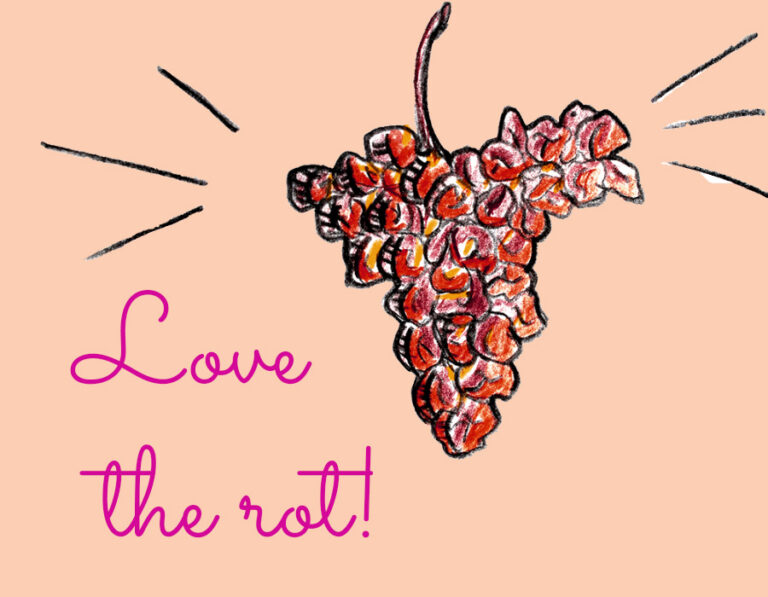
How to pair “noble rot” wines?
The classic sommelier pairing would be sweet meal (dessert) and “noble rot” wine. Desserts with some acidity like our traditional zlevanka and gibanica would pair exceptionally well but give your pairing a twist (if you don’t know it yet, try the recipes 😉 )!
Be different and try your “noble rot” wine with salty cheeses like pecorino romano or pecorino sardo, or salty prosciutto, even some cold starters like carpaccio with a pinch of salt or even fois gras would pair well!
Now my little oenophiles, hope you found the information you were looking for! Now that you know what “noble rot” is, spread the word out, give it wings, let it fly, or keep it for yourself, in a temperature-controlled environment, till you drink it all out, like me, or have it for your friends or family, if you’re better than me! Cheers!
